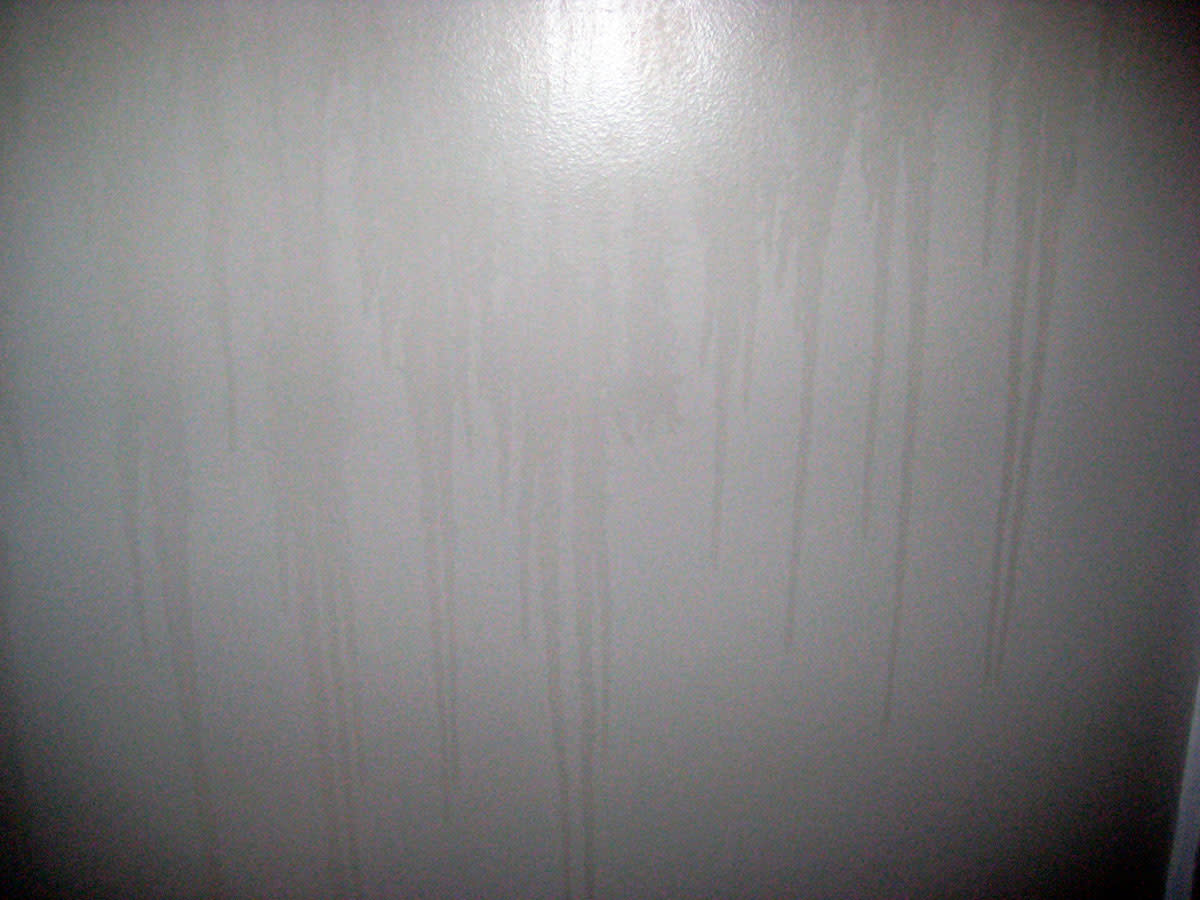Understanding the Cause of Water Streaks

How to clean water streaks on bathroom walls – Water streaks on bathroom walls are a common problem that can be caused by several factors, including the hardness of the water, the type of soap or shower gel used, and the presence of mineral deposits. Understanding the cause of the streaks is the first step to finding a solution to remove them.
Water Hardness, How to clean water streaks on bathroom walls
Hard water contains high levels of dissolved minerals, such as calcium and magnesium. When hard water evaporates, these minerals are left behind on the surface of the bathroom wall, creating a white or chalky residue. This residue can be difficult to remove and can cause water streaks.
One of the easiest ways to clean water streaks on bathroom walls is to use a mixture of equal parts white vinegar and water. Simply spray the solution onto the streaks and wipe them away with a clean cloth. For a more stubborn streak, you can use a soft-bristled brush to gently scrub the area.
Once the streaks are gone, rinse the wall with clean water and dry it with a towel. If you’re looking for a more decorative way to cover up water streaks, consider adding bathroom canvas wall decor. This will not only add a touch of style to your bathroom, but it will also help to prevent water streaks from forming in the future.
Soap Scum
Soap scum is a combination of soap, body oils, and minerals that can build up on bathroom walls over time. Soap scum can create a film on the wall that attracts water, causing streaks to form. Soap scum is often more noticeable in areas where there is a lot of splashing, such as around the shower or bathtub.
Mineral Deposits
Mineral deposits can also cause water streaks on bathroom walls. These deposits are formed when minerals in the water, such as calcium and magnesium, react with the surface of the wall. Mineral deposits can be difficult to remove and can cause permanent damage to the wall if not treated properly.
To eliminate unsightly water streaks on bathroom walls, start by wiping them down with a clean, dry cloth. If streaks persist, apply a small amount of white vinegar to a damp cloth and gently rub the affected areas. For stubborn streaks, consider installing a bathroom vent through the wall to improve air circulation and reduce moisture levels.
Installing a bathroom vent is a relatively simple process that can significantly reduce the accumulation of water vapor, helping to prevent streaks from forming in the future.
Effective Cleaning Methods

Cleaning water streaks from bathroom walls requires the right approach and effective cleaning solutions. Here’s a step-by-step guide to help you restore the pristine condition of your bathroom walls:
Start by identifying the type of water stains you’re dealing with. Hard water stains, caused by mineral deposits, require a different approach than soap scum or mildew stains. Once you’ve determined the nature of the stains, you can choose the most appropriate cleaning solution.
Using Household Cleaners
- Vinegar: Vinegar is a natural acid that effectively dissolves mineral deposits and soap scum. Dilute white vinegar with equal parts water in a spray bottle and apply it to the stained area. Let it sit for a few minutes before wiping it off with a soft cloth.
- Baking soda: Baking soda is a mild abrasive that can help remove stubborn stains. Make a paste by mixing baking soda with a small amount of water. Apply the paste to the stain and let it sit for 15-20 minutes before scrubbing it off with a soft cloth.
- Commercial cleaning solutions: There are several commercial cleaning solutions specifically designed to remove water streaks from bathroom walls. These solutions often contain a combination of acids and surfactants that break down mineral deposits and soap scum. Follow the manufacturer’s instructions for use.
Importance of Using Soft Cloths
When cleaning water streaks, it’s important to use soft cloths to avoid scratching the surface of the wall. Microfiber cloths are a good option as they are gentle and effective at removing dirt and stains. Avoid using abrasive materials such as steel wool or scouring pads, as these can damage the wall’s finish.
Preventive Measures: How To Clean Water Streaks On Bathroom Walls

Preventing water streaks from forming on bathroom walls requires proactive measures that address the underlying causes of their appearance. By understanding the factors that contribute to water streak formation, you can effectively implement preventive strategies to maintain a pristine and streak-free bathroom environment.
One essential preventive measure is to minimize the amount of water that comes into contact with bathroom walls. This can be achieved by using a squeegee or a microfiber cloth to wipe down walls after each shower or bath. Squeegees are particularly effective in removing excess water, while microfiber cloths absorb water and prevent it from leaving streaks.
Ventilation and Air Circulation
Proper ventilation and air circulation play a crucial role in reducing water streaks on bathroom walls. Ensure that your bathroom has adequate ventilation, such as an exhaust fan or open window, to remove moisture from the air. Good air circulation helps to evaporate water droplets and prevents them from settling on walls, reducing the likelihood of water streak formation.